Legal Update, October 2020
By Elizabeth "Issie" Karan
HTCs often inquire with the Hemophilia Alliance regarding what is an appropriate “indirect cost rate.” I put this term in quotations because it goes by many names, facilities & administration fee, overhead charges, etc. Anytime I, as an amateur accountant, confer with true number crunchers, I find it important to make sure that we are discussing the same things. What I mean by “indirect cost rate” is the definition used by the Uniform Grants Guidance (UGG), codified at 45 CFR Part 75. However, what your grants manager, business manager, or pharmacy director means may differ. So, as you have internal conversation, I encourage you to make sure you are discussing the same costs.
Two important sets of rules govern how an HTC budgets and reconciles its books: the UGG and your organization’s rules. Sometimes the grant rules may be more prescriptive; other times your organization may have its own strict rules. As such, it is important to understand when and how both sets of rules govern your HTC’s operations.
As for “indirect cost rates”, the UGG defines the term differently for different types of grantees at §75.414. Major institutions of higher education are defined as those required to use the Standard Format for Submission as noted in appendix III to part 75.C. 11. Major nonprofit organizations are those which receive more than $10 million dollars in direct Federal funding.
For major institutions of higher education and major organizations, indirect (F&A) costs must be classified within two broad categories: “Facilities” and “Administration.” “Facilities” is defined as depreciation on buildings, equipment and capital improvement, interest on debt associated with certain buildings, equipment and capital improvements, and operations and maintenance expenses. “Administration” is defined as general administration and general expenses such as the director's office, accounting, personnel and all other types of expenditures not listed specifically under one of the subcategories of “Facilities” (including cross allocations from other pools, where applicable). For nonprofit organizations, library expenses are included in the “Administration” category; for institutions of higher education, they are included in the “Facilities” category.
Because of the diverse characteristics and accounting practices of nonprofit organizations, the UGG states that it is not possible to specify the types of cost which may be classified as indirect (F&A) cost in all situations. Identification with a Federal award rather than the nature of the goods and services involved is the determining factor in distinguishing direct from indirect (F&A) costs of Federal awards. However, typical examples of indirect (F&A) cost for many nonprofit organizations may include depreciation on buildings and equipment, the costs of operating and maintaining facilities, and general administration and general expenses, such as the salaries and expenses of executive officers, personnel administration, and accounting.
As for general rules of thumb for indirect cost rates, please see this letter from the Maternal and Child Health Bureau to then Program Directors of the MCHB Hemophilia Regional Grant, describing how HTCs should approach indirect cost rates. Additionally, this letter from the Maternal and Child Health Bureau, dated 1996 stating that the average indirect cost rate charged to HTCs was approximately 8.25%.
Also in this Issue…
Notes from Joe
· Improving Access to Care While Lowering Costs
Payer Update
· Payer Trends: What You Need to Know
Alliance Update
· Community Relations Update – October 2020
· Join Our Growing Hemophilia Alliance Team
· 2021 Meeting Schedule

Comments are closed.